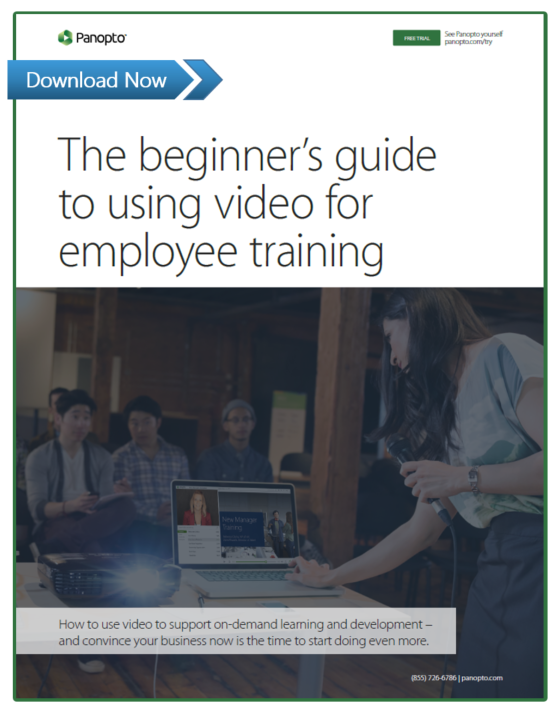- Social Learning & Knowledge Management
Why Employee Training Fails And How To Prevent It In Your Organization

U.S. companies spent more than $70 billion on training in 2016. Larger organizations with more than 10,000 employees drove much of that spending, boasting training budgets that averaged $13 million.
With so much being invested in employee training, you might be surprised to learn that nearly 90% of new skills are lost and forgotten within a year.
The good news is that it’s not necessarily the budget that determines the success or failure of corporate training programs. There is both an art and a science to teaching and learning, as experienced learning and development (L&D) professionals know well.
No organization is immune to training challenges. And of course, no two organizations will struggle with the same set of challenges — the hurdles any L&D team faces change as the size of the business increases and as its growth accelerates.
Regardless, there are commonalities that experts have observed across nearly all businesses. We’ve compiled the seven most common reasons employee training fails, with ideas for addressing each that can help you make your training programs more successful.
7 Reasons Why Training Can Fail
1. Limited Time and Competing Priorities
Employees are continually working to prioritize sometimes overwhelming lists of tasks and meetings, and typically training sessions take a back seat to anything that directly supports the business. Every trainer has heard “schedule conflicts” blamed for flagging attendance.
Fail-proof Training Tip: Look for ways to make training more flexible. Record employee training sessions and make them available to employees on-demand so they can attend virtually when their schedules allow it.
2. Lack of Interest
Many employee training programs struggle with a lack of interest from workers who fail to see the value or benefits of training courses to their personal success. Other employees may leave sessions early or simply skip classes outright if they perceive it to be boring or low-value.
Fail-proof Training Tip: While there is no silver bullet for getting employees more engaged in training, strategically marketing your training programs to employees and getting support from managers across the business will go a long way. Employees need to see how the training benefits them, so it doesn’t get pushed to the bottom of their priority list. Using video for training can give you insightful data that helps you measure training effectiveness so you can improve content over time, too.
3. Limited Budget and Training Resources
Corporate trainers are learning to do more with less as budgets get slashed year after year. In 2016 businesses in the U.S. increased their focus on training, yet budgets remained the same from the previous year. You know all the steps you need to take to make a training program successful — from design to implementation — but you will have to cut some corners.
Fail-proof Training Tip: In terms of the average number of hours required to develop a learning experience for employees, creating instructional video content is by far both the quickest and the cheapest. If you’re trying to maximize learning throughout your organization while minimizing costs, an online video training platform will help you do more with less.
How much can you save
with video-based e-learning?
Calculate Your Savings
4. Information Overload
In order to maximize resources available and minimize logistical expenses, it’s common for companies to offer intensive day(s)-long training programs. The reality is that people simply can’t absorb and remember all of that information in that amount of time, meaning even more than usual of what’s taught will be quickly forgotten and lost.
Fail-proof Training Tip: Test video-based microlearning training methods, which can improve both learning and retention. Producing short, memorable training videos that present bursts of information in 5 to 10 minute chunks is easy with the right video presentation recording software. And best of all, when an employee inevitably forgets something shared in those lessons, they’ll simply be able to re-watch the video on-demand as needed to learn it again.
5. Lack of Planning and Poor Timing
Ever heard the phrase “we’re flying the plane while we’re building it?” This concept of “ship it, then fix it, then ship it again” was born in Silicon Valley and has become a standard business practice in many businesses working hard to stay ahead of the game. Chances are your L&D teams will not have the luxury of carefully planning and strategically executing formal training programs throughout the organization 100 percent of the time.
Fail-proof Training Tip: Equip your organization with the right tools for social learning. Employees actually learn 20% of what they need to know from collaboration and feedback from colleagues, so be sure to make it as easy as possible for your teams to share what their knowledge and learn from their peers.
6. Neglecting What Happens After Training
When employees don’t use the skills they’ve learned after training, knowledge decay sets in very quickly. New skills have to be practiced and applied. Without a strategy for reinforcing new skills after the training ends, 90% of what your employees were taught could be lost.
Fail-proof Training Tip: Design follow-up activities and testing that reinforce learned skills after the training ends. Also be sure to make training materials available to employees through a central knowledge base so they can reference training they may have forgotten when they are ready to apply it. More and more L&D teams are recording employee training videos and archiving them in a searchable video library — this lets employees not only revisit the training exactly as it happened but also saves the training team time by reducing the need to create written documentation for employees who aren’t able to attend the class in-person.
7. Relying On Technology To Do The Work For You
Sometimes we want to believe that technology will solve all our training problems, but a mobile app or even e-learning authoring tool alone will not guarantee the success of a corporate training program. And selecting technology that doesn’t align with the company’s specific needs can also be a mistake.
Fail-proof Training Tip: Perform a training-needs assessment before purchasing new technologies. The types of skills gaps you have within your organization will dictate the technologies you need most to help maximize learning within your organization. Look for employee training technologies that can support the instructional design of your core programs before, during, and after training.
Learn More About Using Video For Employee Training
 In The Beginner’s Guide To Using Video For Employee Training, we help you make the business case for doing more with video, including:
In The Beginner’s Guide To Using Video For Employee Training, we help you make the business case for doing more with video, including:
- 5 benefits that help convince your decision makers to use video in more ways
- 14 ideas for supporting and scaling formal and informal learning with video to reduce costs
- 1 technology that simplifies video learning, both in the office and virtual work environments




